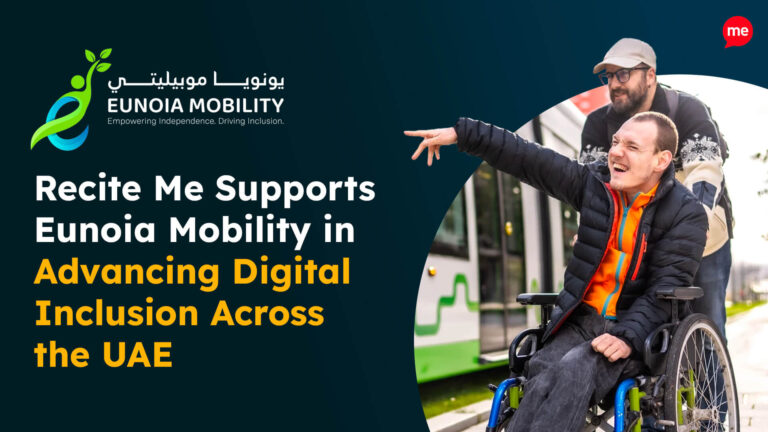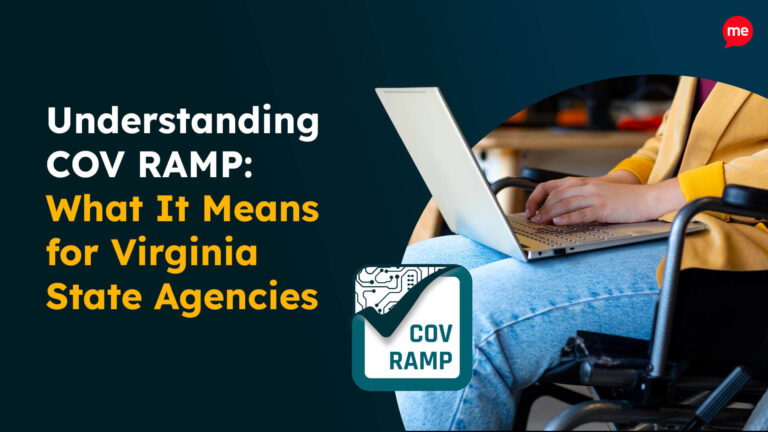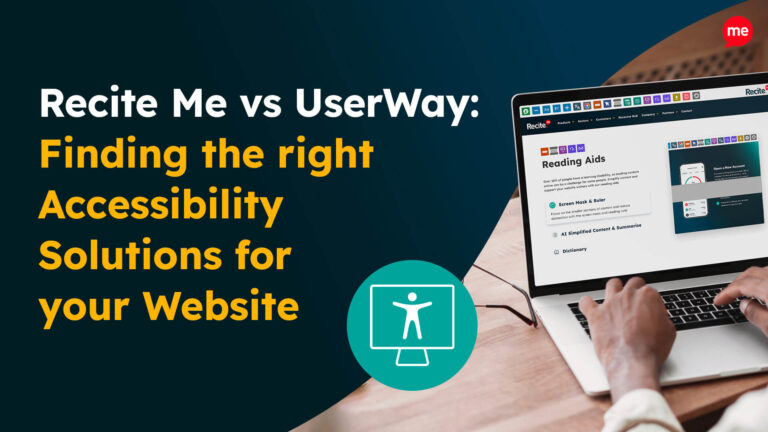Get A Free Accessibility Audit of your Website
Download NowWithout a website that’s usable by everyone, you’re likely missing out on customers, damaging your brand, and even risking legal action. Ensuring your site is accessible is therefore an ethical, commercial, and legal necessity.
An accessibility audit is the first step in identifying and fixing the barriers that make your website difficult or impossible to use. But, precisely what is an accessibility audit, and how do you run one? Here’s everything you need to know.
What is an accessibility audit?
An accessibility audit is a structured evaluation of your website’s ability to meet the needs of all users, including those with disabilities. It involves reviewing your digital content, design, and code to ensure compliance with recognized accessibility standards, most commonly the Web Content Accessibility Guidelines (WCAG).
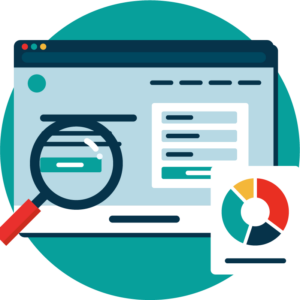
Why should you perform an accessibility audit of your website?
The ultimate goal is to uncover barriers to accessibility that might prevent users with visual, hearing, motor, or cognitive impairments from fully accessing and interacting with your content.

Here’s why that matters:
- Equal access: Identifying areas where users face barriers and taking steps to remove them helps you reach a broader audience.
- Legal compliance: Most regions have accessibility regulations that mandate minimum digital accessibility standards.
- Improved SEO and UX: There is a significant overlap between accessibility and SEO best practices, so accessible websites typically load faster and achieve better rankings.
- Enhanced brand reputation: Removing digital barriers demonstrates your commitment to inclusion and corporate social responsibility.
- Better conversion rates: Accessible websites reduce friction, improve engagement, and increase the likelihood that visitors will convert.
In each of these respects, a website audit is a strategic move that enhances performance, protects your business, and shows commitment to every potential customer.
Get a free automated accessibility check of your websites homepage. This will identify and highlight any compliance issues on your website. Followed by recommendations on how to implement the necessary changes to make your website more accessible.

The role of WCAG in creating accessible websites
WCAG is the global benchmark for website accessibility. Developed by the W3C, the guidelines outline a clear set of technical criteria to make your web content more accessible to people with a wide range of abilities and access needs.
Nearly every major digital accessibility law directly references WCAG as the standard for compliance. So, whether you’re operating in Europe, North America, or beyond, WCAG alignment is crucial in avoiding complaints or litigation.
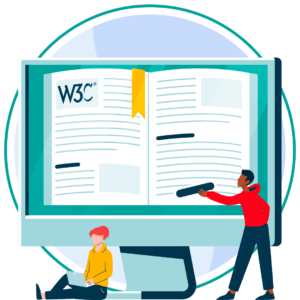
What are the different types of accessibility audits
Accessibility audits are typically conducted using automated or manual testing. Understanding the benefits and limitations of each approach is essential if you’re to select the most suitable methodology for your goals, resources, and timeline.
Automated accessibility audits
Automated accessibility audits use software tools like the Recite Me Accessibility Checker to scan your website for common accessibility issues. They crawl your code and content, checking it against WCAG criteria to quickly identify errors and generate a detailed report of fixes.
Pros of automated website audits
- Speed and scalability: Most tools scan hundreds of pages in seconds.
- Cost-effective: Many tools are free or low-cost to use.
- Code-level checks: Effortlessly spot issues like missing alt text, incorrect heading structures, or unlabeled buttons.
- Easy to run regularly: Ideal for continuous integration and development workflows.
- User-friendly: Error reports and explanations are easy to understand, even for non-technical users.
Cons of automated website audits
- Limited depth: Can’t detect context-based or user experience issues.
- False positives or missed barriers: Human judgment is still essential for accuracy.
Manual accessibility audits
Manual accessibility audits are performed by a human–preferably one with significant web accessibility expertise. Evaluations are usually conducted using screen readers and keyboard navigation, and should include a deep review of design patterns, usability, and real-life user journeys.
Pros of manual website audits
- Real-user perspective: Reflects how people with disabilities actually interact with your site.
- Context-aware: Detects problems that automation misses.
- Captures nuanced issues: Determines the quality (rather than simply the existence) of alt text, link wording, form instructions, etc.
- Improves UX: Goes beyond code to enhance usability and clarity.
- Adds legal weight: More robust for demonstrating due diligence in the event of a complaint.
Cons of manual website audits
- Time-consuming: Can take days or even weeks, depending on the size of your site.
- Requires expertise: Usually involves hiring a specialist or team.
Adopting a hybrid auditing approach for the best results
While each methodology has clear benefits, neither offers complete coverage on its own. If you want both WCAG compliance and real-world usability, a hybrid approach is essential. Using automation to flag common issues and manual testing to validate and triage them helps streamline remediation efforts. A combined methodology also offers stronger evidence of due diligence, which is vital for both compliance and stakeholder reporting.
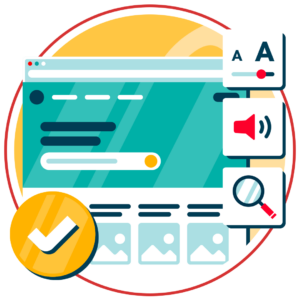
What issues will an accessibility audit detect on your website?
Specific obstacles range from invisible code-level errors to poor design and unclear user journeys. Here is a list of common issues that pop up time and time again:
- Missing or incorrect alt text: Images without meaningful alternative text make content inaccessible to screen reader users.
- Poor color contrast: Text that blends into the background is hard to read for users with low vision or color blindness.
- Inaccessible forms: Missing labels, unclear instructions, or improper focus order can make online forms difficult or impossible to complete.
- Keyboard navigation failures: Users who rely on keyboard navigation rather than a mouse or trackpad must be able to move through your site logically and without getting stuck.
- Non-descriptive link text: Phrases like “click here” provide no context when read out of order by a screen reader.
- Missing document structure: Pages without headings, lists, or landmarks confuse users and assistive technologies alike.
- Inconsistent or missing focus indicators: Users navigating via keyboard require clear visual cues to determine their location on the page.
- Dynamic content issues: Pop-ups, modals, or auto-updating elements that don’t announce changes can disrupt or disorient users.
- Multimedia without captions or transcripts: Video content should include accurate and properly synced captions and transcripts for users who are deaf or hard of hearing.
- Timed interactions: Forms or checkouts that time out without warning can exclude users who need more time to complete tasks.
- Mobile accessibility issues: Mobile accessibility is particularly important for users with motor impairments and those who rely on screen readers.
- Missing or redundant ARIA attributes: Incorrect use of ARIA (Accessible Rich Internet Applications) roles and properties can confuse screen readers or create unnecessary noise for assistive tech users.
Achieving accessibility is easier than many organizations think, as most of these issues are easy to fix once identified.
How to action the findings from your accessibility audit
An accessibility audit report is only valuable if it leads to real change. So, once you’ve identified issues, the next step is to prioritize fixes and create a clear roadmap for remediation.
We recommend you start by grouping your findings into categories:
- Quick wins: Easy fixes like adding alt text or updating link wording.
- Moderate fixes: Items requiring some dev or design effort, like form labels or heading structure.
- Complex issues: Items that need significant changes, such as dynamic content handling or keyboard navigation logic.

When you’re just starting out, focus on problems that appear frequently across your site and issues that affect critical user journeys like checkout, login, or contact forms. Give priority to errors found on high-traffic pages, like your homepage, product pages, and blog content. Then, roll out across your entire platform.
Pro tip: Remember to keep accessibility top of mind during ongoing content creation and development so you’re not just patching issues, but preventing new ones from cropping up.
How does accessibility auditing protect against lawsuits
A comprehensive audit helps mitigate legal risk by identifying violations early. Accessibility lawsuits are on the rise, and websites that fail to meet legal accessibility standards are increasingly being flagged for non-compliance.
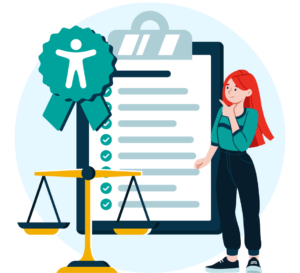
Most global accessibility laws reference WCAG as the benchmark for compliance. This includes:
However, some regions have introduced independent legislation that expands on or supersedes national requirements. For example, Ontario’s AODA (Accessibility for Ontarians with Disabilities Act) imposes additional digital accessibility obligations beyond Canada’s federal ACA.
Likewise, a growing list of US states have implemented their own accessibility laws or procurement policies:
No matter which laws apply, regular auditing builds a clear record of due diligence, demonstrating the ways your organization has taken proactive steps to improve accessibility and compliance.
Get a free automated accessibility check of your websites homepage. This will identify and highlight any compliance issues on your website. Followed by recommendations on how to implement the necessary changes to make your website more accessible.

Accessibility Starts with Action. Recite Me Can Help.
Although legal protection is vital, website accessibility audits aren’t just about compliance. The overarching goal should always be to create more inclusive, user-friendly experiences for everyone who visits your site.
At Recite Me, we help thousands of organizations worldwide to make their online content accessible. Get your free accessibility check today to find out where your current digital experience falls short, and contact our expert team to learn more about how best to make the necessary fixes.
Website Accessibility Auditing FAQs
Got questions? Here are a few FAQs to help clear up any grey areas and get you started on your accessibility auditing journey.
Are accessibility audits a legal requirement?
Possibly, depending on which laws apply to your organization. However, even when not explicitly required, audits are the logical starting point for improving accessibility. Additionally, audit records often play a crucial role in documenting due diligence in the event of a complaint or legal review.
How much does an accessibility audit cost?
Costs vary widely based on your site’s size, audit type (automated vs. manual), and complexity. Even if you start off with a free or low-cost automated scan, a manual audit to ensure full compliance typically requires investment in expert consultation and additional resources.
How long does an accessibility audit take?
Automated scans can be completed in just a few minutes. Manual audits take longer, ranging from a few days for smaller websites to several weeks for larger or more complex sites.
Which standards should accessibility audits test against?
Most audits are based on the Web Content Accessibility Guidelines (WCAG), typically Level AA.
Will fixing flagged issues guarantee compliance?
Not necessarily, but it will bring you much closer. Compliance is an ongoing commitment, and regular audits and continuous monitoring are essential to stay aligned with evolving content and standards.
How often should I run an accessibility audit?
Automated scans are best run weekly, monthly, or with every new deployment. Manual audits should be scheduled at least annually or after any major design, development, or content updates.
Can I complete an Accessibility Audit myself?
It’s always a good idea to use accessibility experts and special auditing tools to help guide you through the process. But, you can get started for free with a website accessibility audit checklist.

